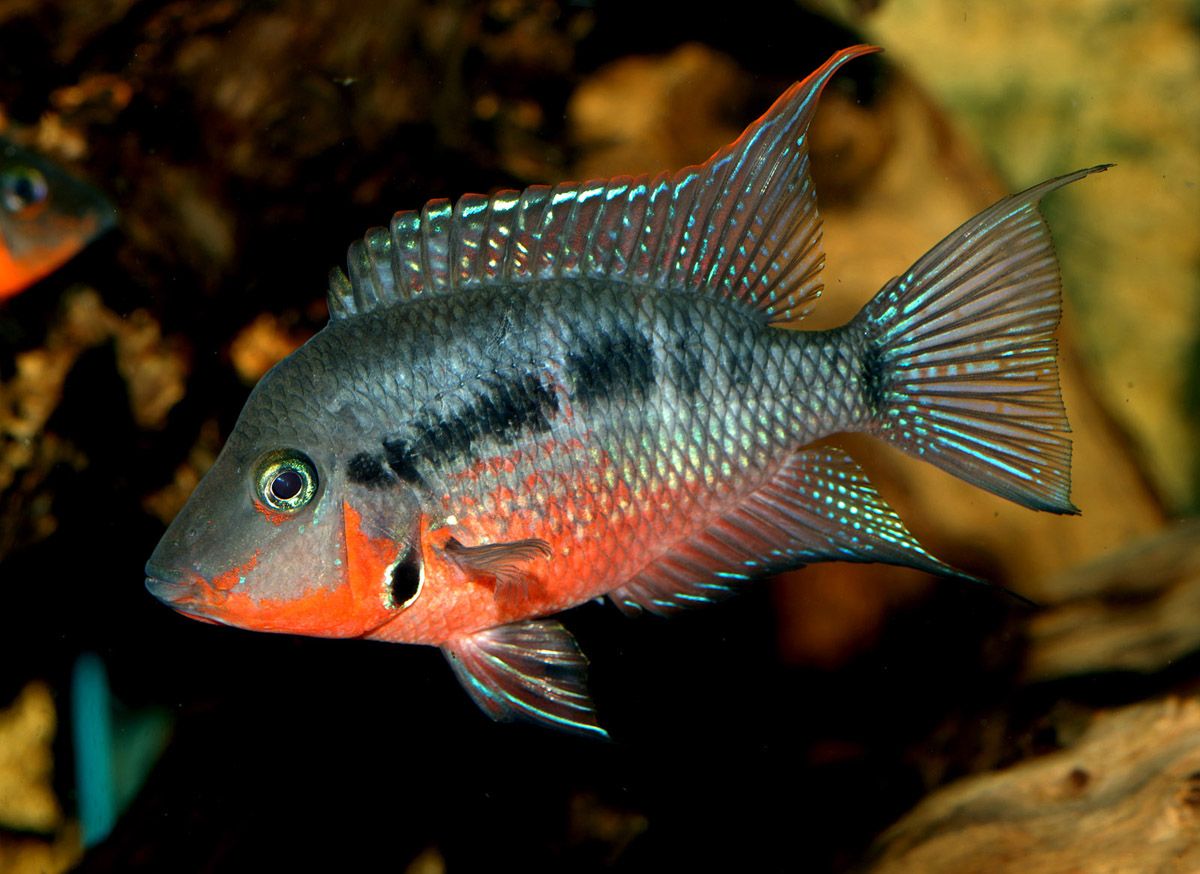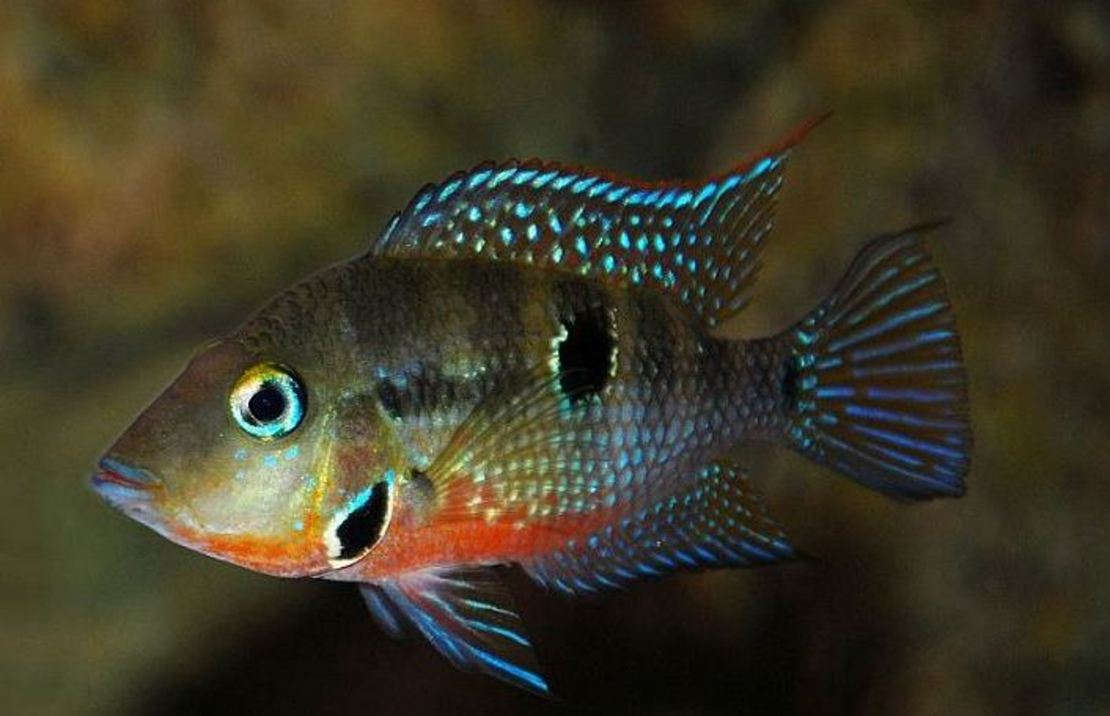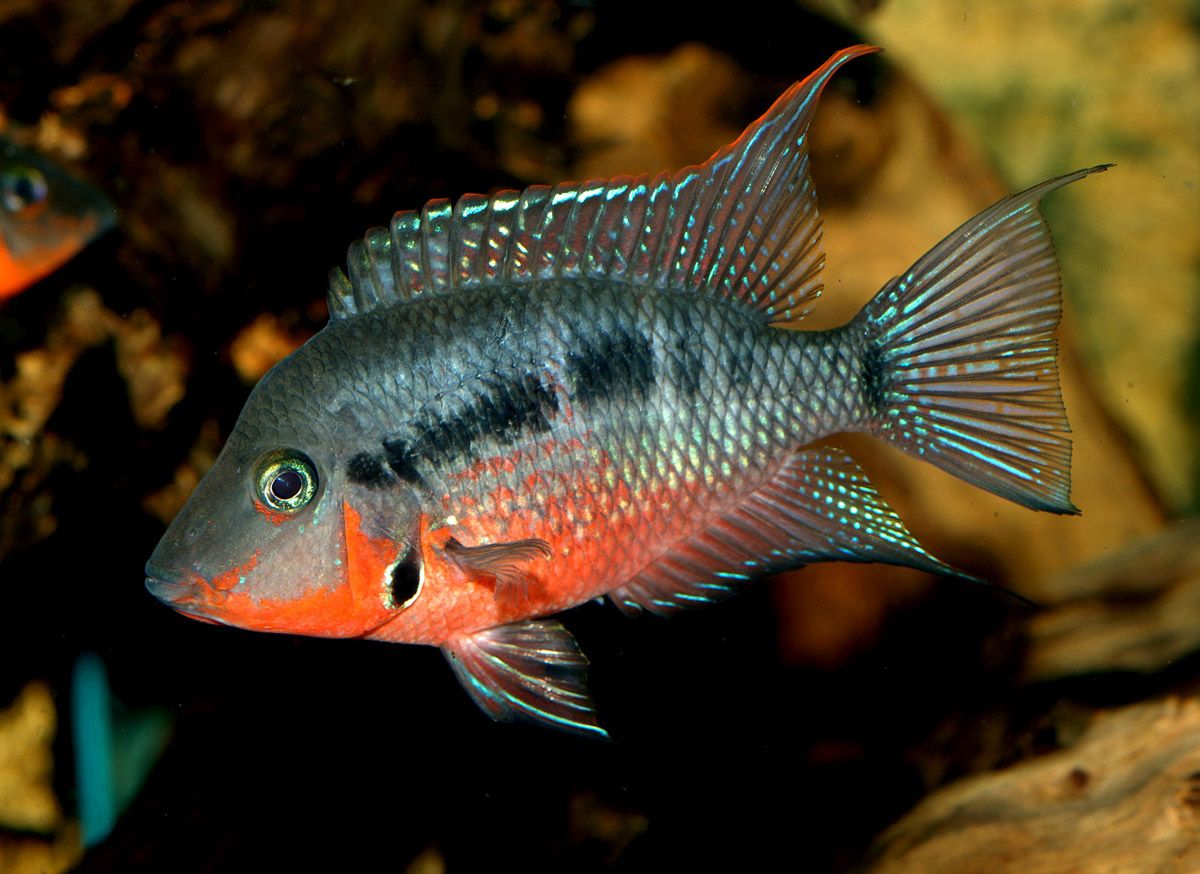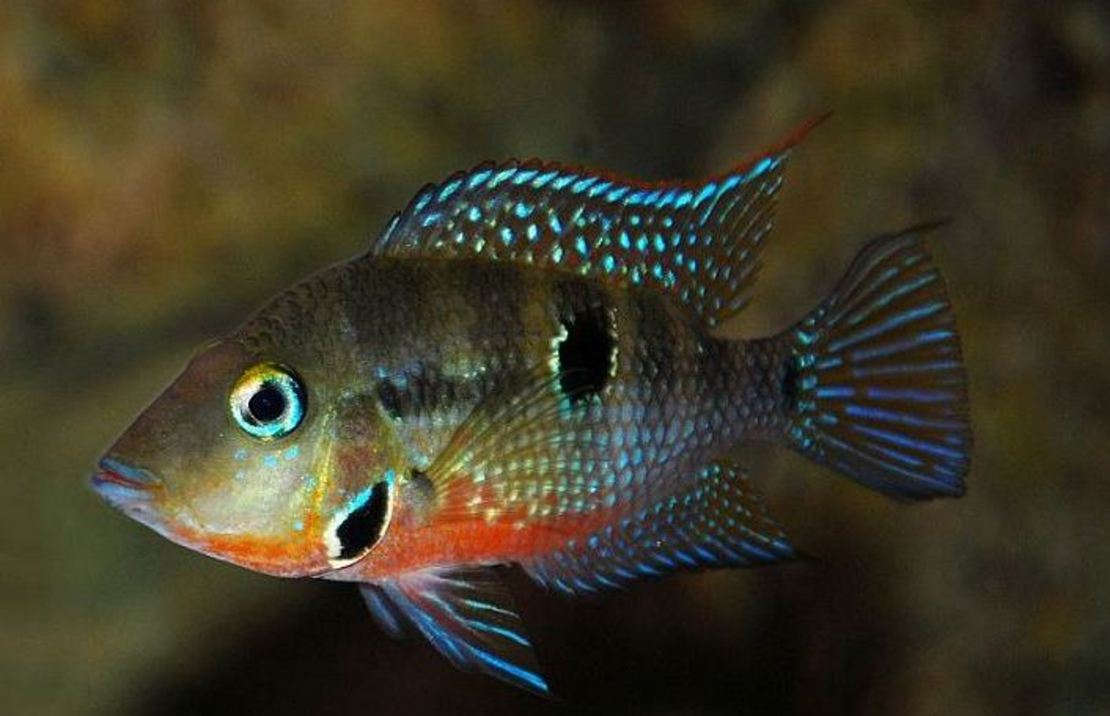Cichlid - Firemouth (Thorichthys meeki)
Cichlid - Firemouth (Thorichthys meeki)
Couldn't load pickup availability
The Firemouth Cichlid (Thorichthys meeki) are found in Central America; Mexico, Guatemala, Belize, El Salvador, Honduras, Nicaragua, Costa Rica, and Panama. It inhabits the middle and bottom areas of slow moving rivers, ponds, and canals with sandy or muddy bottoms. They stay close to vegetation near the shore where they feed on algae along with some meaty foods. It is one of the most popular cichlids due to its vibrant red coloring, pleasant demeanor, and easy care. This is an extremely beautiful fish and fun to keep. The Firemouth is a relatively small fish when compared to many other Central American cichlids, only reaching about 15cm and is extremely laterally compressed. Its body has a unique ‘teardrop’ shape characterised by a steeply sloping forehead emphasising its pointed snout.
The Firemouth is so named due to the fiery coloration on the underside of its mouth and throat. In addition, it has a vivid red coloration on the belly extending from the mouth to the base of the tail. The rest of the body is generally blue-gray with several black blotches while the fins are brown and streaked with blue. Slight differences in coloration are present on particular fish depending on where the fish originated.
This is a great fish for both beginning fish keepers and advance aquarists alike. It is generally a peaceful cichlid and makes for a suitable addition to a large community tank. It’s best kept with its own kind and other large and similar tempered species. The one time when these fish tend to become more than marginally aggressive is when they are attempting to spawn. During breeding they can turn aggressive towards other fish and are especially threatening towards smaller members of their own species.
During spawning the male Firemouth Cichlid is even more vivid in appearance as he displays an impressive bluff. A ‘bluff’ is an aggressive stance where he inflates his fiery red throat sac and gill covers to impress females and ward off competitors. It has been discovered by ethologists, scientists who study animal behavior, that just this red coloring alone is intimidating to other fishes!
Firemouths like to burrow on occasion, so it’s best to provide a substrate of fine sand for them to dig and nest in. They will also appreciate a number of hiding places and caves formed out of rocks, wood, or any other type of aquarium decoration. Although they like to have some living plants in their tank, make sure the plants are potted so as to avoid them being uprooted if the Firemouth happens to dig around their roots. Place hardy plants, such as Anubias, around the inside perimeter leaving an open area in the centre for swimming.
Since they are omnivorous the Firemouth Cichlid will generally eat all kinds of flake, fresh, and live foods. A varied diet is an important part of keeping your fish in good health, so it is recommended that you provide your fish with a high quality flake food or pellet everyday. In addition, meaty foods such as brine shrimp or blood worms should be occasionally offered as a treat.
The Firemouth Cichlids are egg layers and regularly breed in captivity. They are tricky to sex however, so it is easiest to simply have 6 or so in a tank and let them pair off themselves. Once paired they form a monogamous nuclear family and are excellent and quite prolific parents. The breeding water should be neutral with a pH of 7.0, medium hard at about 10° dGH, and have temperatures between 26°c – 30°c. The female spawns 100-500 eggs on carefully cleaned rocks. Once hatched, the fry become free swimming in about a week. They are herded into pits in the substrate by the parents and ferociously guarded by both parents. The parents may actually raise several broods per year.
- Species – Thorichthys meeki
- Common Name – Firemouth Cichlid
- Origin – Southern Mexico and Guatemala in lakes and creeks
- Diet – Omnivores
- PH Range – 7 – 8
- Temperature – Tropical 26°c – 30°c
- Breed Type – Egg Layer
- Current Size – approximately 10cm (Grows to approximately 15cm)
- Sex – Un-sexed
Share



